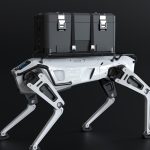The robotics sector is preparing for an eventful gathering as RoboBusiness 2025 shares its agenda, bringing together prominent names and new technologies at the Santa Clara Convention Center on October 15-16. Attendees can expect exposure to substantial discussions centered on commercial robotics, from development breakthroughs to business strategies. Alongside product showcases, workshops, and competitions, this event is positioning itself as a nexus where companies such as NVIDIA, Amazon Robotics, Agility Robotics, DHL, and Intuitive Surgical interact with professionals eager to shape the next phase of automation. Robotics practitioners and enthusiasts are increasingly seeking events that offer not only networking but also real practical insights into emerging robotics applications.
When reflecting on announcements from RoboBusiness in recent years, the event maintains a pattern of focusing strongly on facilitating connections between engineers, product developers, and suppliers. However, previous editions emphasized foundational and industrial robotics, whereas the 2025 agenda shows a clear expansion into areas like physical AI and humanoids. Compared to former years, the presence of advanced players such as NVIDIA and Intuitive Surgical in keynotes suggests a shift toward more integrated solutions, including simulation-first development and next-generation surgical systems, rather than focusing solely on hardware innovation or isolated technologies.
What Is the Focus of RoboBusiness 2025?
The upcoming RoboBusiness features over 100 exhibitors introducing solutions for robotics development challenges, supported by presentations from more than 60 speakers. This year’s conference tracks extend into areas like physical AI, humanoids, and field robotics, reflecting growing interest in robotics that operate effectively in unstructured environments. Startups are also given a platform via competitions and workshops, designed to support both fresh entrants and seasoned experts.
Who Is Headlining the Conference Agenda?
The keynote lineup includes Deepu Talla of NVIDIA, who explores how advanced AI models are affecting real-world deployment of robots, and Iman Jeddi of Intuitive Surgical, discussing the evolution of the da Vinci surgical robotics system. Panel discussions will cover first experiences with humanoid robot deployments, where representatives from Agility Robotics and GXO Logistics share operational insights. Sessions on the state of robotics look at both industry progress and ongoing barriers, guided by voices from Cobot and DHL Supply Chain.
“Physical AI, where models can perceive, reason, and act in real-world environments, is redefining what’s possible in robotics,”
said Deepu Talla of NVIDIA.
How Is Industry Collaboration Reflected at the Event?
Collaboration continues to be emphasized, with companies such as ABB, PickNik Robotics, and Ambi Robotics set to join discussions and exhibitions. Networking opportunities and co-location with DeviceTalks West highlight RoboBusiness’ effort to converge medical technology and robotics professionals. These arrangements aim to encourage multidisciplinary exchanges that could accelerate adoption and implementation of robotics in diverse industries.
“You have to design not just for the present, but for the future of digital surgery,”
stated Iman Jeddi of Intuitive Surgical.
Expert observers may note the increasing crossover between AI-driven robotics and operational settings such as logistics or healthcare—the agenda demonstrates emphasis on not only technological innovation, but also deployment practicality and strategic thinking. The conference signals the growing maturity of robotics, where artificial intelligence integration and systems thinking are regarded as fundamental. Attendees interested in best practices, networking, and firsthand perspectives on real-world challenges can anticipate actionable discussions. As robotics becomes more embedded in daily business processes and clinical workflows, ongoing dialogue between developers, suppliers, and users remains essential. This approach can help organizations align solutions to operational needs and adapt to rapid advances.










